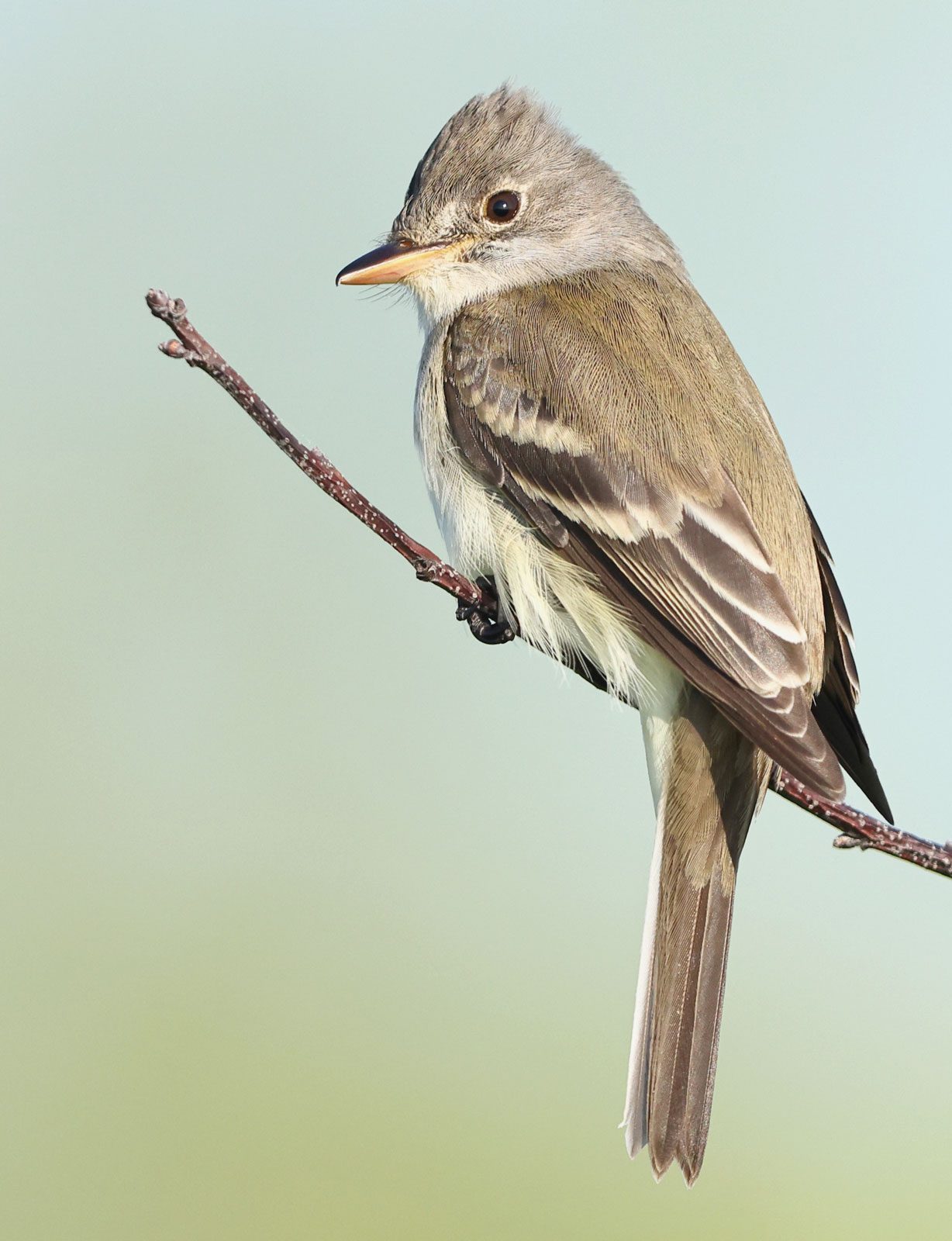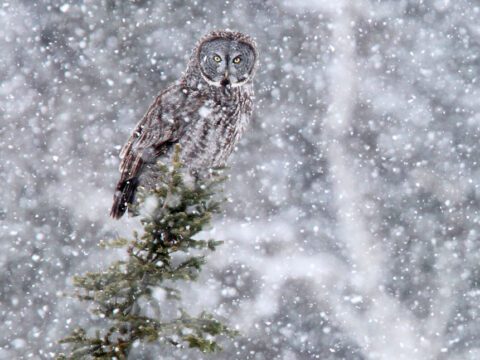Endangered Willow Flycatchers in San Diego Are Adapting to Climate Change
January 4, 2024
From the Winter 2024 issue of Living Bird magazine. Subscribe now.
Recent research has uncovered an endangered Willow Flycatcher population’s ability to undergo genetic change in order to adapt to climate change.
In a study published in the journal Nature Climate Change last June, researchers documented a genome-wide shift within a population of Willow Flycatchers in San Diego, which scientists think has equipped the unassuming brownish-olive songbirds to better confront escalating wet and humid conditions in coastal southern California.
The Southwestern Willow Flycatcher has been federally protected under the Endangered Species Act since 1995. One of four subspecies of Willow Flycatcher, it has a range across seven states from Texas to California. Many Southwestern Willow Flycatchers in San Diego live in the wet willow thickets along the San Luis Rey River, an area that has experienced increased variability of precipitation patterns and a rise in temperature over the last few decades.
For the study, scientists studied 616 flycatcher specimens dating back to the early 1900s, including 23 specimens from the Cornell University Museum of Vertebrates. They found that the genetic structure of most Southwestern Willow Flycatchers has remained more or less unchanged outside of San Diego. However, when the team performed a whole-genome analysis of Southwestern Willow Flycatchers from San Diego, and compared it to San Diego flycatcher specimens from more than 100 years ago, they found that the present-day flycatchers have a higher prevalence of gene variants associated with adapting to wet and humid conditions.
According to Sheela Turbek, a postdoctoral fellow at Colorado State University and lead author on the study, this genetic change likely stems from interbreeding with other Willow Flycatcher populations. At some point over the past century, Willow Flycatchers from across the Southwest and from the Pacific Northwest (a separate subspecies) have exchanged genetic material with Willow Flycatchers in San Diego. This mixing with neighboring populations introduced new genetic material into Southwestern Willow Flycatchers breeding in San Diego and may have facilitated an evolutionary response to climate change that shows up in the genome of modern-day San Diego birds.
Leonardo Campagna, an ornithologist who was not involved with this research, says that the findings from this paper demonstrate why it’s important to preserve large and interconnected populations of any organism.
“The best way to do that is to protect habitat and the movement of individuals across the landscape,” says Campagna, who is assistant director of the Fuller Evolutionary Biology Program at the Cornell Lab of Ornithology. “Large healthy populations will harbor more genetic variation, and therefore be well equipped to respond to natural selection and adapt in the direction they may need to go.”

All About Birds
is a free resource
Available for everyone,
funded by donors like you
American Kestrel by Blair Dudeck / Macaulay Library


